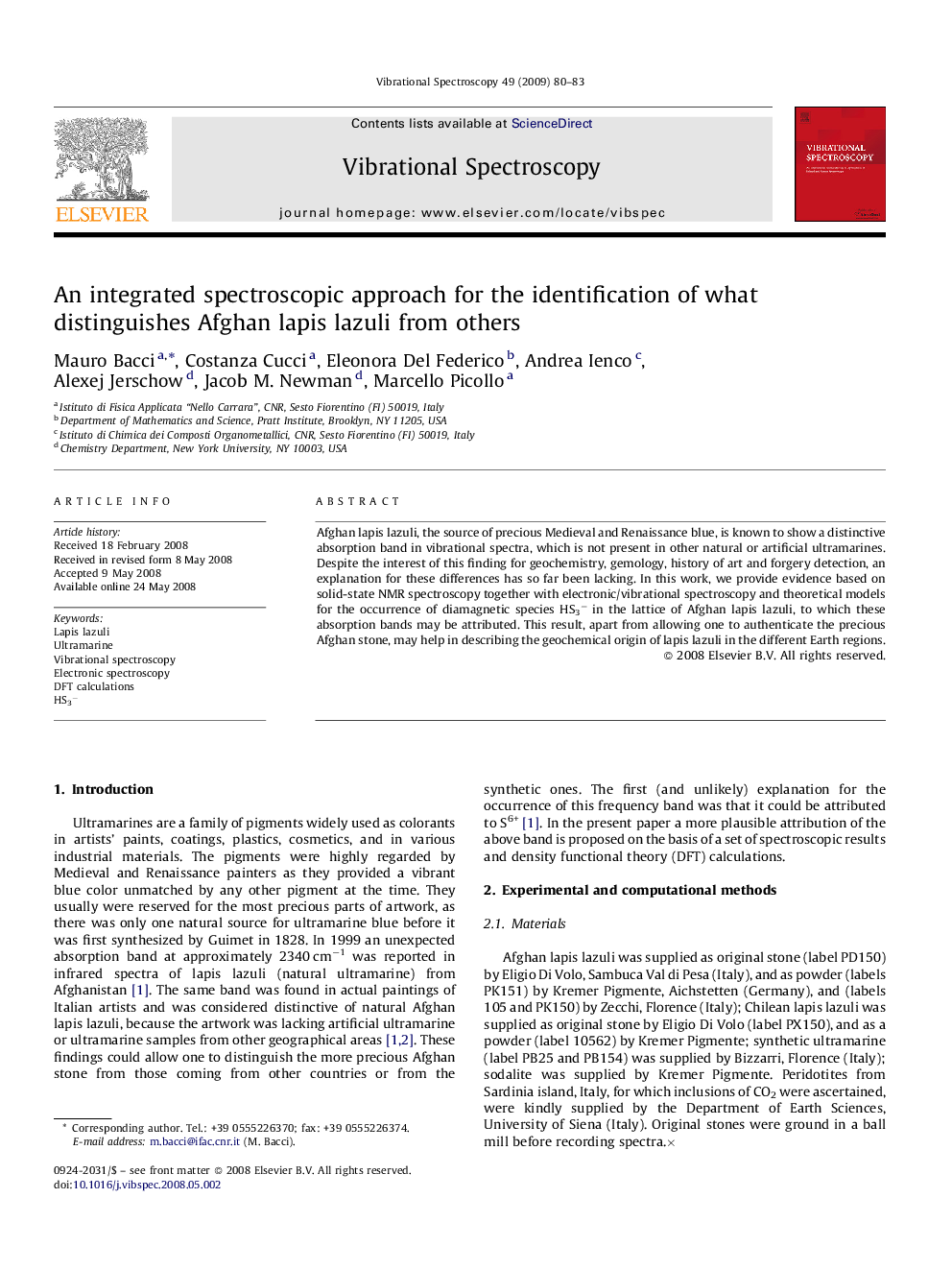| Article ID | Journal | Published Year | Pages | File Type |
|---|---|---|---|---|
| 1250851 | Vibrational Spectroscopy | 2009 | 4 Pages |
Afghan lapis lazuli, the source of precious Medieval and Renaissance blue, is known to show a distinctive absorption band in vibrational spectra, which is not present in other natural or artificial ultramarines. Despite the interest of this finding for geochemistry, gemology, history of art and forgery detection, an explanation for these differences has so far been lacking. In this work, we provide evidence based on solid-state NMR spectroscopy together with electronic/vibrational spectroscopy and theoretical models for the occurrence of diamagnetic species HS3− in the lattice of Afghan lapis lazuli, to which these absorption bands may be attributed. This result, apart from allowing one to authenticate the precious Afghan stone, may help in describing the geochemical origin of lapis lazuli in the different Earth regions.
